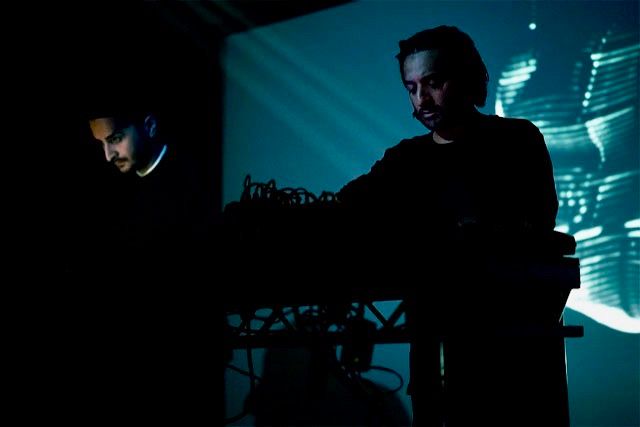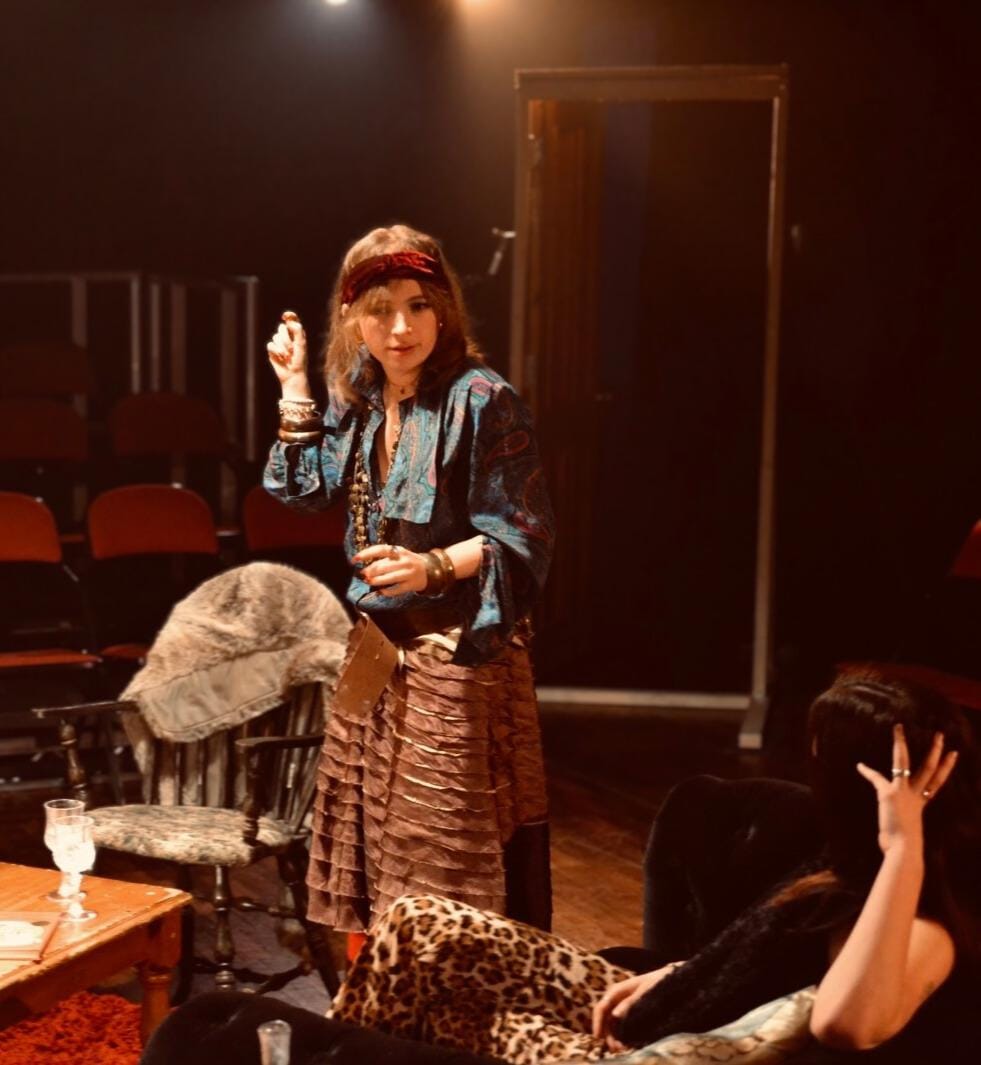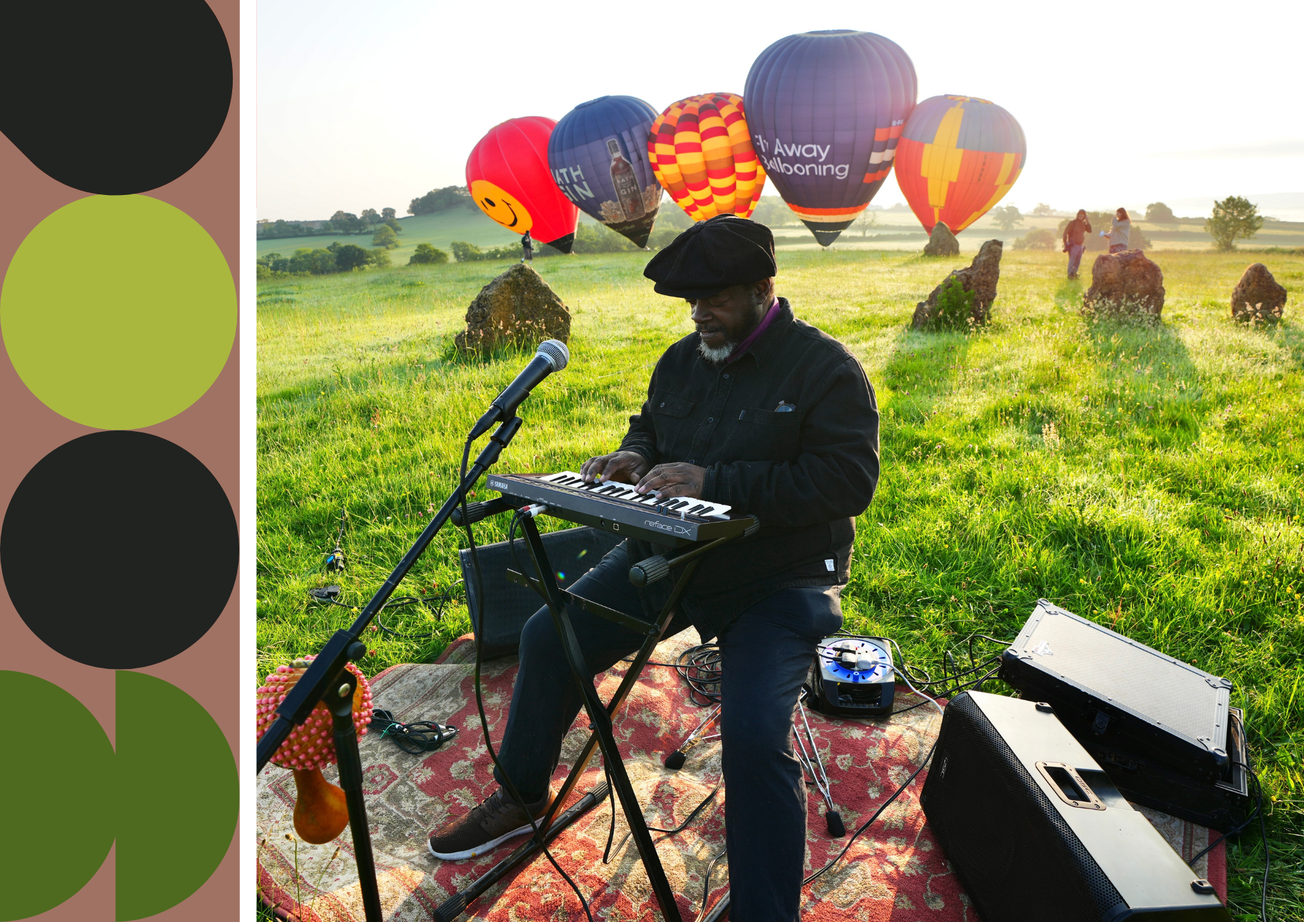By Serafina Lee, Deputy Digital Arts Editor
Ahead of the audiovisual collaboration 'AMRA' at Spike Island on the 29th of November, Epigram talks to artists Paul Purgas and Imran Perretta. 'AMRA' is an experimental collaboration, incorporating live performance fused with electronic sound and analogue media, exploring South Asian identity.
How did you come to work together and form 'AMRA'?
'We both have many shared interests across music and art and also share a studio space together at Somerset House in London. When a recent commission opportunity came up we decided to collaborate as an experiment to see what ideas might emerge through a one-off live performance. As a consequence of this we decided to form AMRA into something more concrete as an outlet for a lot of the ideas we had both been navigating relating to the South Asian experience and how we could reflect on both its past and future.'
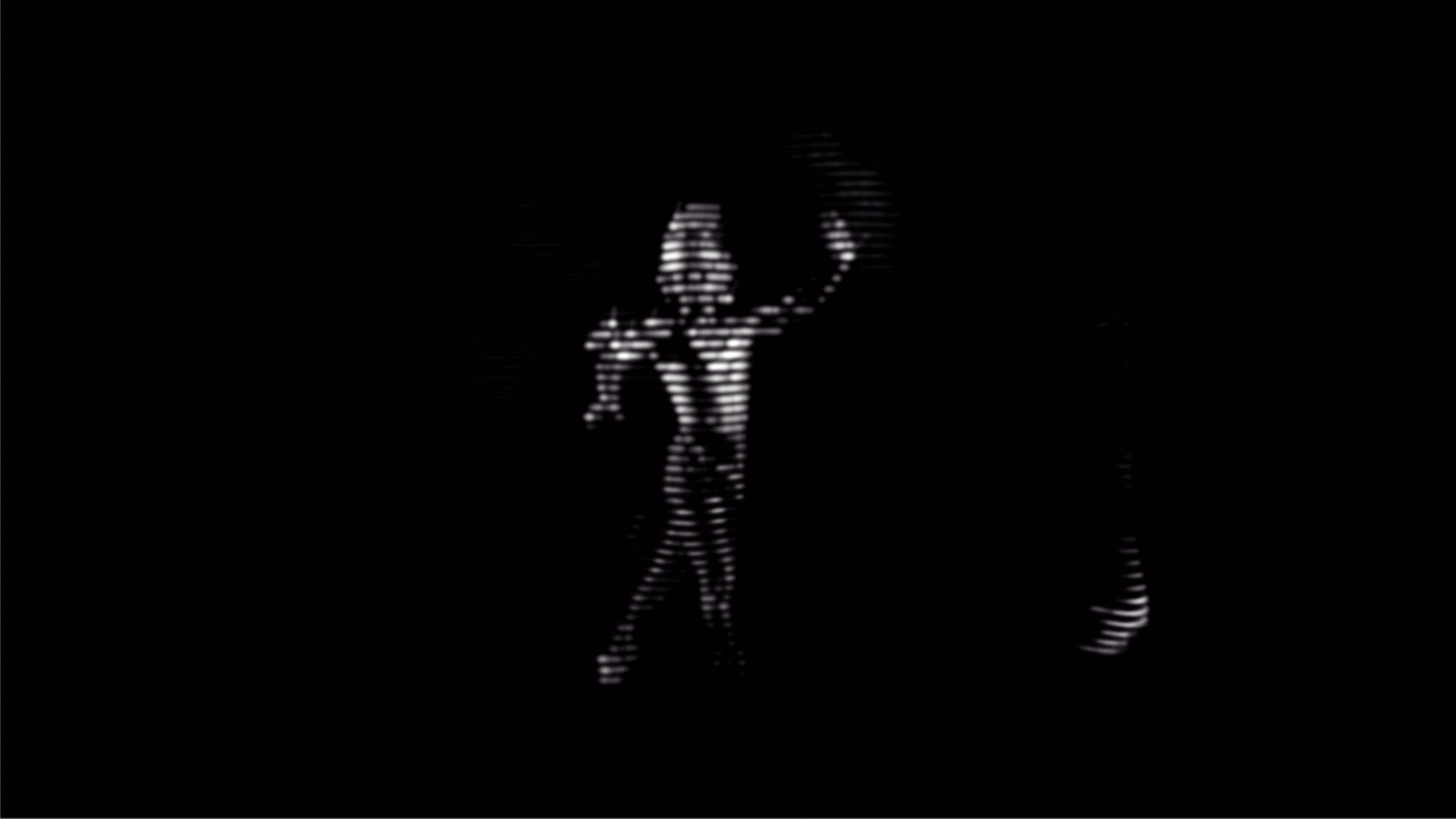
What kind of experimental music and audiovisuals can we expect at your performance?
'For this performance we have worked with various sound archives and field recordings, both historical and contemporary, connected to South Asia to build the audio. The process of constructing and reworking this material has drawn on an interest in various British electronic dance music forms as well as more textural and avant-garde approaches to sound and composition. Alongside this, visuals have been developed from video we shot with Indian dancers in our studio as well as archival 16mm film footage and digital 3D models of artefacts and buildings. All of these are composited and heavily processed live using deconstructive techniques based on analogue video synthesis.'
Could you tell me about your work and your experimentation with sound?
'With AMRA we initially started to develop sketches from old historical recordings, some even developed from wax cylinders and very early field recordings. As we moved forward this started to expand outwards to think through a broader spectrum of archives and what they could be, these began to include South Asian sample packs and collections of instrument recordings such as flutes, tablas and shruti boxes. These ideas formed the template for the performance as we started to experiment with various ways of compositionally bringing all this material together into a coherent whole.'
What are some of your formative influences?
'We are interested in the classic Indian traditions of Hindustani and Carnatic music and how we relate to these as diasporic people. One of the key modern recordings that has inspired us is Charanjit Singh’s !0 Ragas to a Disco Beat. Also both of us have been involved in underground electronic music and been involved with running club nights embedded in grime and bass music as well as classic Chicago House and Detroit Techno. So these influences have definitely percolated into the formation of AMRA.'
What are the ‘physical properties of sound’ that you work with and how do you explore materiality?
'A lot of our production has been bass focused, drawing from our interest in full frequency sonics and sound systems, linking to the visceral and bodily experience of sound. So this consideration of frequency, body and space and how these can interact are integral to our performance. The live show itself has been considered from its outset to be a complete object with sound and images working together. Much of the video is also audio reactive so there is a very clear sensory link between sound and image, creating a very bonded and indexical relationship, and the video material itself draws from a similar set of South Asian references being remodelled and abstracted live in a spirit that mirrors the audio.'
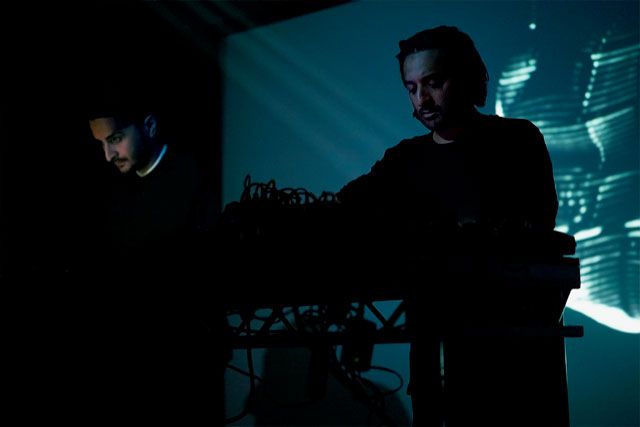
How does analogue media feature in 'AMRA'?
'Much of our production process has been based around analogue hardware and processing, using distortion and saturation for example. Within the live performance we also incorporate pedals and analogue outboard effects such as reverbs and delays to help shape the sound and maintain this electrical and physical manipulation of the audio.'
White noise can start to develop this hypnotic effect once it’s amplified, what sort of atmosphere do you wish to create on the night?
'This idea of a hypnotic and dense soundfield feature within the live performance as well as field recordings and vocal excerpts. These all come together within quite structured as well as looser more collaged forms. Overall the evocation and ritual of the performance is important to us, creating a space that is both alive and contemplative, capable of looking backwards and forwards through time.'
How do you expect the sound elements to complement the visual artwork and spoken word performances?
'We will share the lineup with Tadleeh, formerly known as Petite Singe, a musician we have a great deal of respect and appreciation for. We first encountered her through Nkisi’s programme for the Wysing Arts Centre annual festival and have been following ever since. Also Abbas Zahedi is a friend whose work we are greatly inspired by who will be presenting a spoken word performance. The programme together reflects on the links between sound, voice, rhythm and time bringing together a broad set of approaches into a singular frame.'
How can your audio experimentation be applied to cultural context, in this case ‘addressing South Asian identity’?
'As individuals of diasporic descent much of our knowledge and experience of our ancestry has been second hand, passed through media, music, dance and custom rather than direct contact. AMRA became a way of working through this feeling of closeness and distance, giving it voice and form as well as reflecting on the diversity of our heritage which incorporates Hindu, Muslim and Sikh origins and how these lineages could potentially speak to each other.'
A night of experimental music, audiovisual and spoken word performances in a Bristol warehouse space ⚡️ Friday 29 November, 7pm–12am ⚡️
— Spike Island (@_SpikeIsland) November 22, 2019
Headlined by AMRA: audiovisual collaboration between Imran Perretta and artist-musician @PaulPurgas of @emptyset_
🎟️ https://t.co/qgc89zHFzC pic.twitter.com/ZrBU8xyAAL
What’s the connection with Imran Perretta’s new film ‘the destructors’, currently showing in the main galleries at Spike Island?
'Issues of social justice in the British Asian community are part of the conversation we are seeking to bring out in our music and Imran's film at Spike Island is similarly politically engaged. 'the destructors' looks at the often painful experience of 'coming of age' for young South Asian men from Muslim backgrounds in a post 9/11 era characterised by widespread Islamophobia, austerity and the War on Terror. Narratives of socio-economic marginalisation are central to our collaboration as AMRA as well as our independent artistic practices, so there will always be a strong nexus between the work we make together and as individuals.'
Why did you choose a warehouse space for this performance by 'AMRA' and does that factor into the experience you wish to deliver on the night?
'Much of our music has drawn from less precious and rarified traditions of electronic music such as club and rave scenes. So in developing an event for Spike Island it felt like the right fit to operate within this type of approach, creating a less rigid and imposing context for the audience.'
'AMRA' is on Friday the 29th November, doors open at 7pm and tickets are £8, £5 for concessions.
Featured Image : Spike Island / Imran Peretta, Paul Purgas
Are you interested in electronic music?

